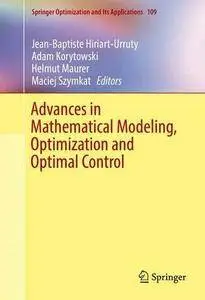Advances in Mathematical Modeling, Optimization and Optimal Control
Springer | Mathematics | Jun 17 2016 | ISBN-10: 3319307843 | 201 pages | pdf | 2.96 mb
Springer | Mathematics | Jun 17 2016 | ISBN-10: 3319307843 | 201 pages | pdf | 2.96 mb
Editors: Hiriart-Urruty, J.-B., Korytowski, A., Maurer, H., Szymkat, M. (Eds.)
Treats both theoretical and practical aspects of image processing, partial differential inclusions, shape optimization, and optimal control
Contains applications to medical and rehabilitation technology
Includes new theoretical results and applications in biomechanics, medical technology, image processing, and robotic control
This book contains extended, in-depth presentations of the plenary talks from the 16th French-German-Polish Conference on Optimization, held in Kraków, Poland in 2013. Each chapter in this book exhibits a comprehensive look at new theoretical and/or application-oriented results in mathematical modeling, optimization, and optimal control. Students and researchers involved in image processing, partial differential inclusions, shape optimization, or optimal control theory and its applications to medical and rehabilitation technology, will find this book valuable.
The first chapter by Martin Burger provides an overview of recent developments related to Bregman distances, which is an important tool in inverse problems and image processing. The chapter by Piotr Kalita studies the operator version of a first order in time partial differential inclusion and its time discretization. In the chapter by Günter Leugering, Jan Sokołowski and Antoni Żochowski, nonsmooth shape optimization problems for variational inequalities are considered. The next chapter, by Katja Mombaur is devoted to applications of optimal control and inverse optimal control in the field of medical and rehabilitation technology, in particular in human movement analysis, therapy and improvement by means of medical devices. The final chapter, by Nikolai Osmolovskii and Helmut Maurer provides a survey on no-gap second order optimality conditions in the calculus of variations and optimal control, and a discussion of their further development.
Number of Illustrations and Tables
5 b/w illustrations, 15 illustrations in colour
Topics
Calculus of Variations and Optimal Control; Optimization
Biomedical Engineering
Image Processing and Computer Vision
Operator Theory
Computational Mathematics and Numerical Analysis
Click Here to Buy the Hardcover from Springer
Click Here for More books



